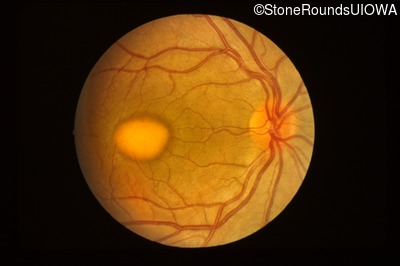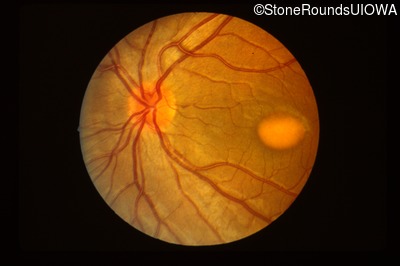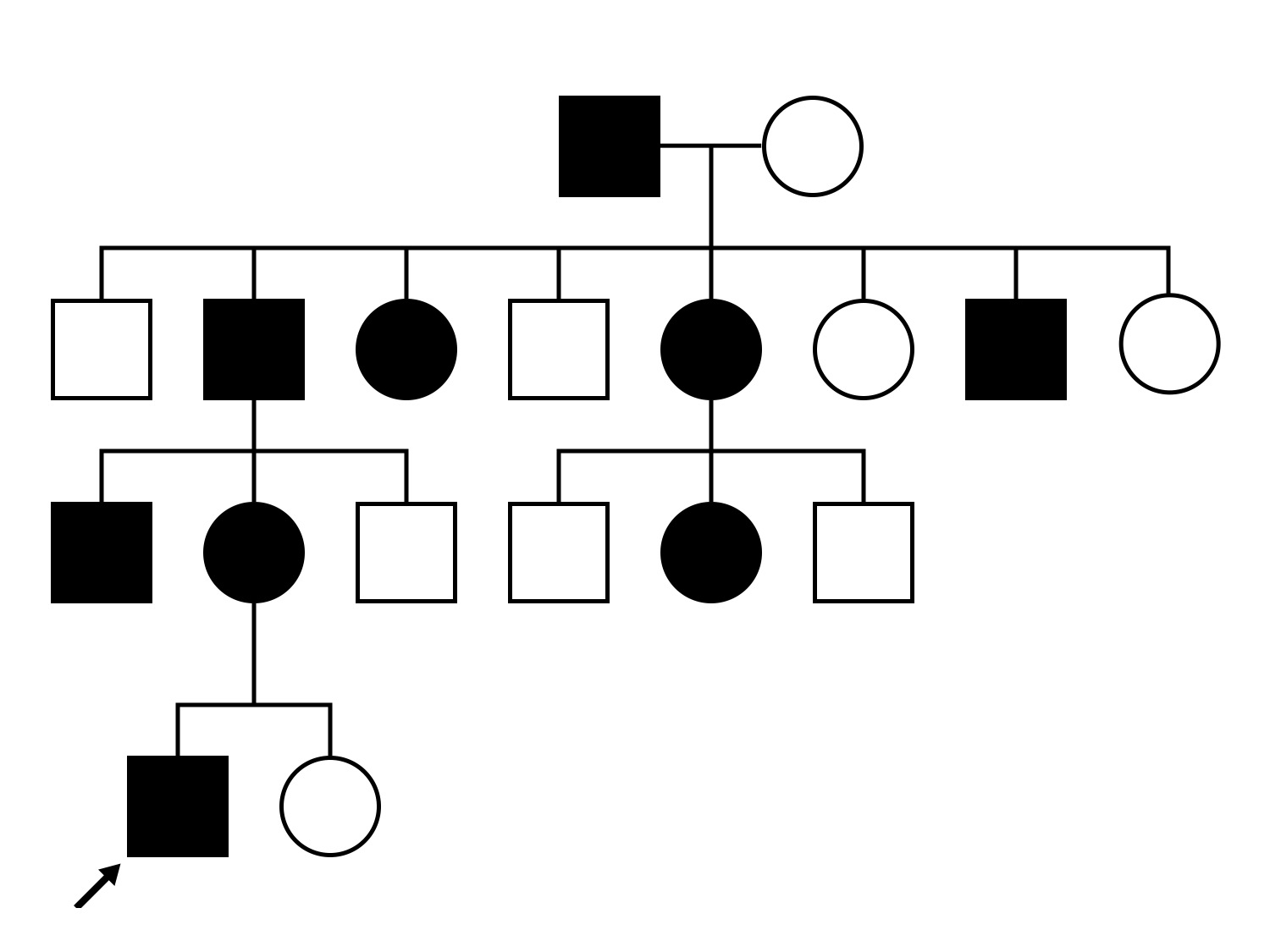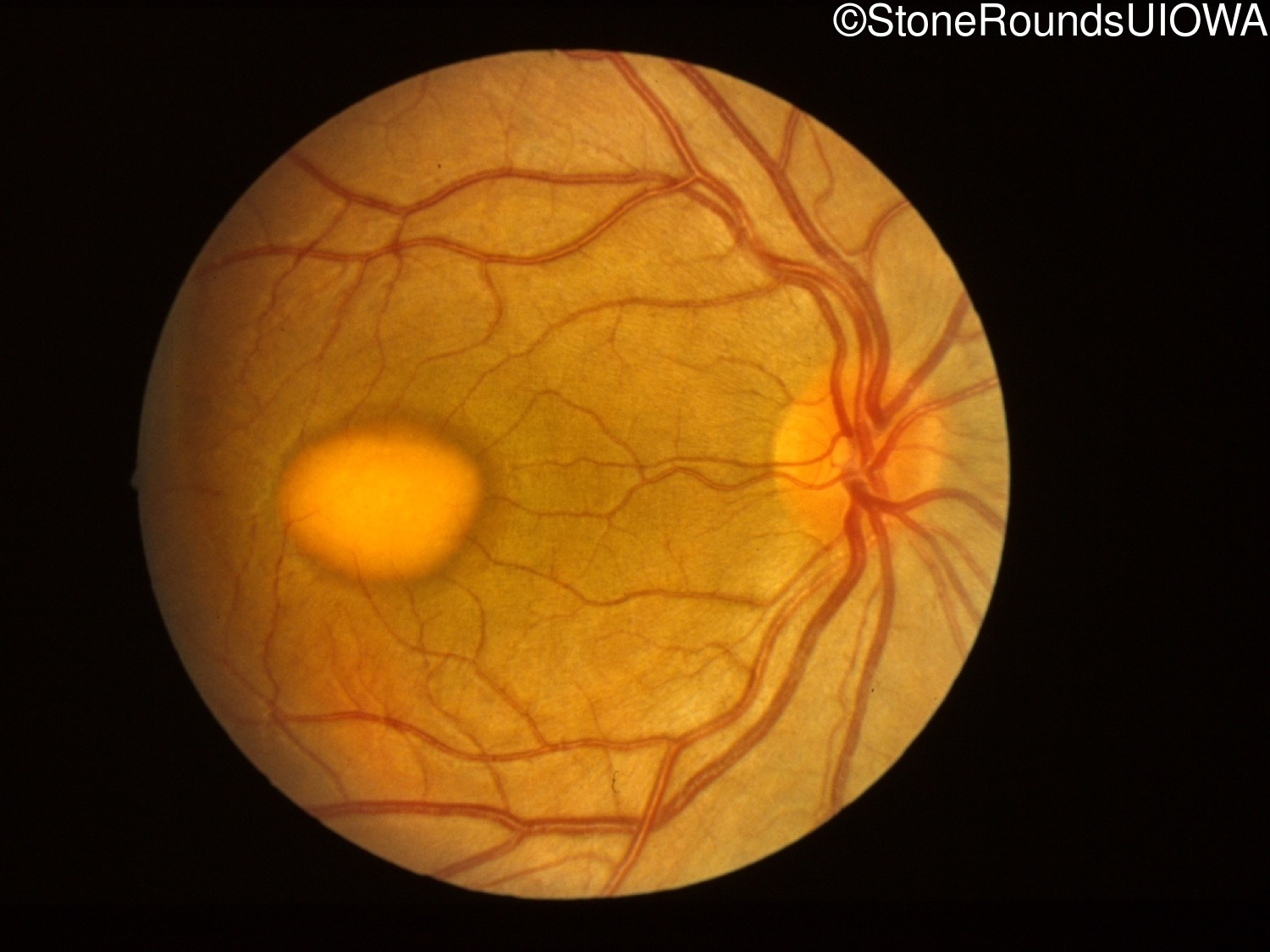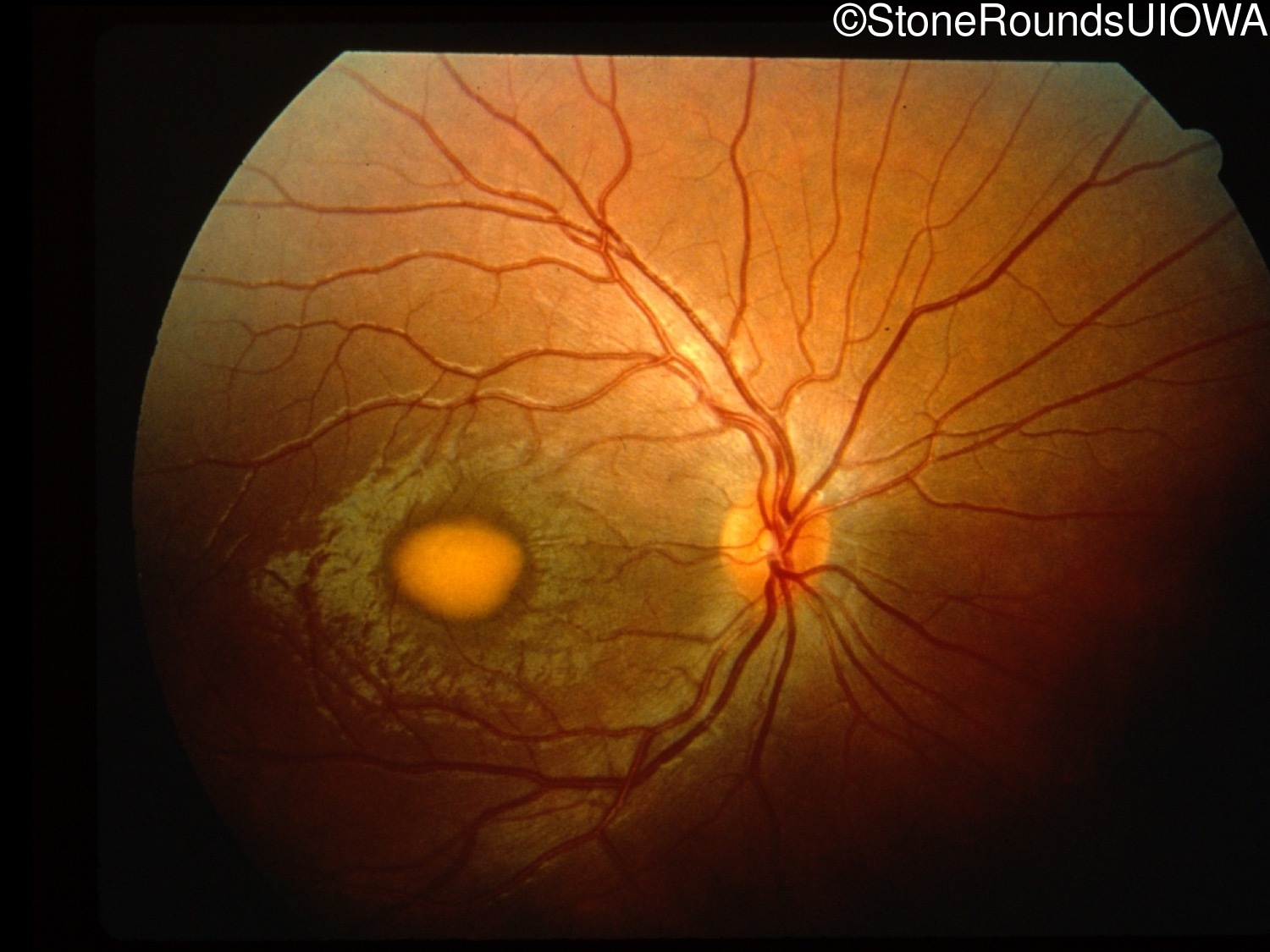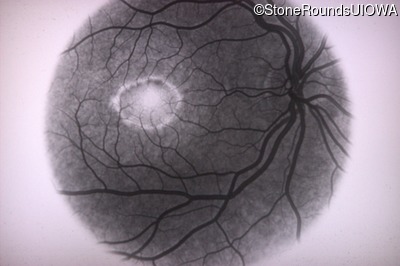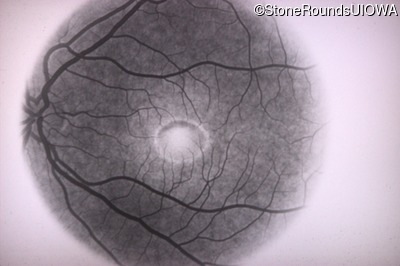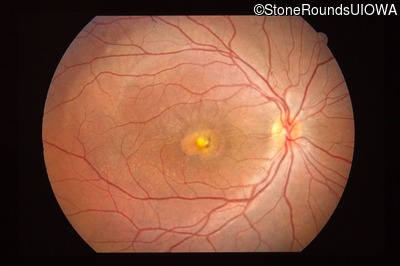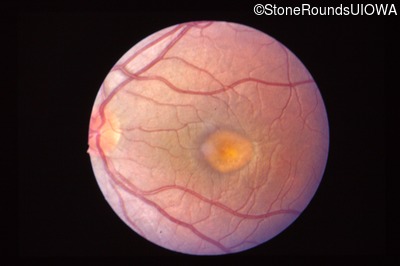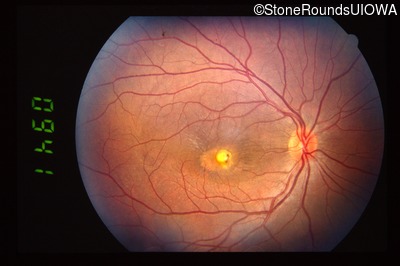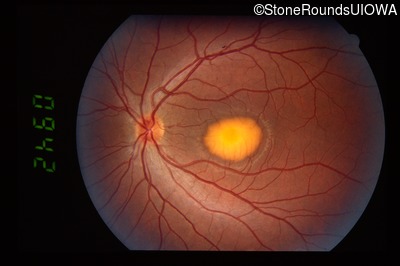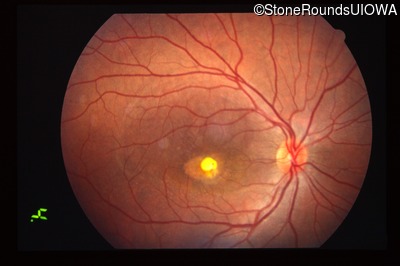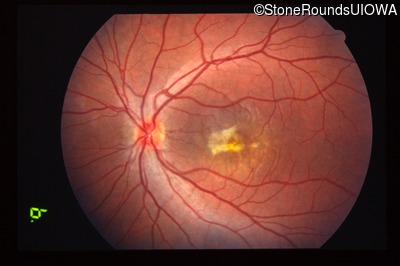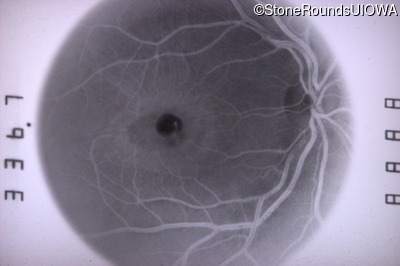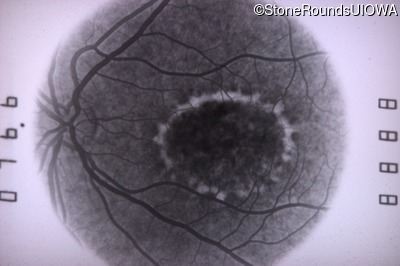Case
SR62
Student Mode
Best Disease (IIB)
Male
Male
Hidden
SR62
Student Mode
Best Disease (IIB)
Male
Male
Highlighted Images
| Age at visit: 13 years | OD | OS |
|---|---|
History
This 13 year old male has a chief complaint of reduced visual acuity. He first noticed some intermittent blurring of his vision earlier this year. His visual acuity has been normal in the past.
| Refraction OD: | -1.75 + 0.75 x 90 |
|---|---|
| Refraction OS: | -1.75 + 0.75 x 90 |
Teaching Points
The clinical features favoring the diagnosis of autosomal dominant Best disease in this patient include the large bright yellow vitelliform lesions, the relatively good visual acuity and the extensive autosomal dominant family history. Autosomal dominant macular dystrophies often have good acuity despite a fairly dramatic fundus appearance.
Normal branch retinal arteries are about 100 microns in diameter while branch retinal veins are about 175 microns in diameter. The venous circulation has a noticeably darker purple-red color as well which is well seen in this patient's photographs. Ophthalmoscopic features of autosomal dominant Best disease include a round to horizontally oval "vitelliform" (egg-yolk-like) deposit of yellowish material between the photoreceptors and the RPE. The vitelliform lesion can range in diameter from 250 microns to more than 3 mm. Large Best lesions can be present as early as the first few years of life and small ones can first become manifest after age 50. The modifying factor(s) responsible for this variable expressivity are currently unknown. Mutations in RDS (aka PRPH2) can also cause vitelliform lesions but the latter are less likely to be as large or to have the very smooth borders seen in this individual. The shiny retinal surface seen in the 60 degree photographs is common in patients under the age of 20.
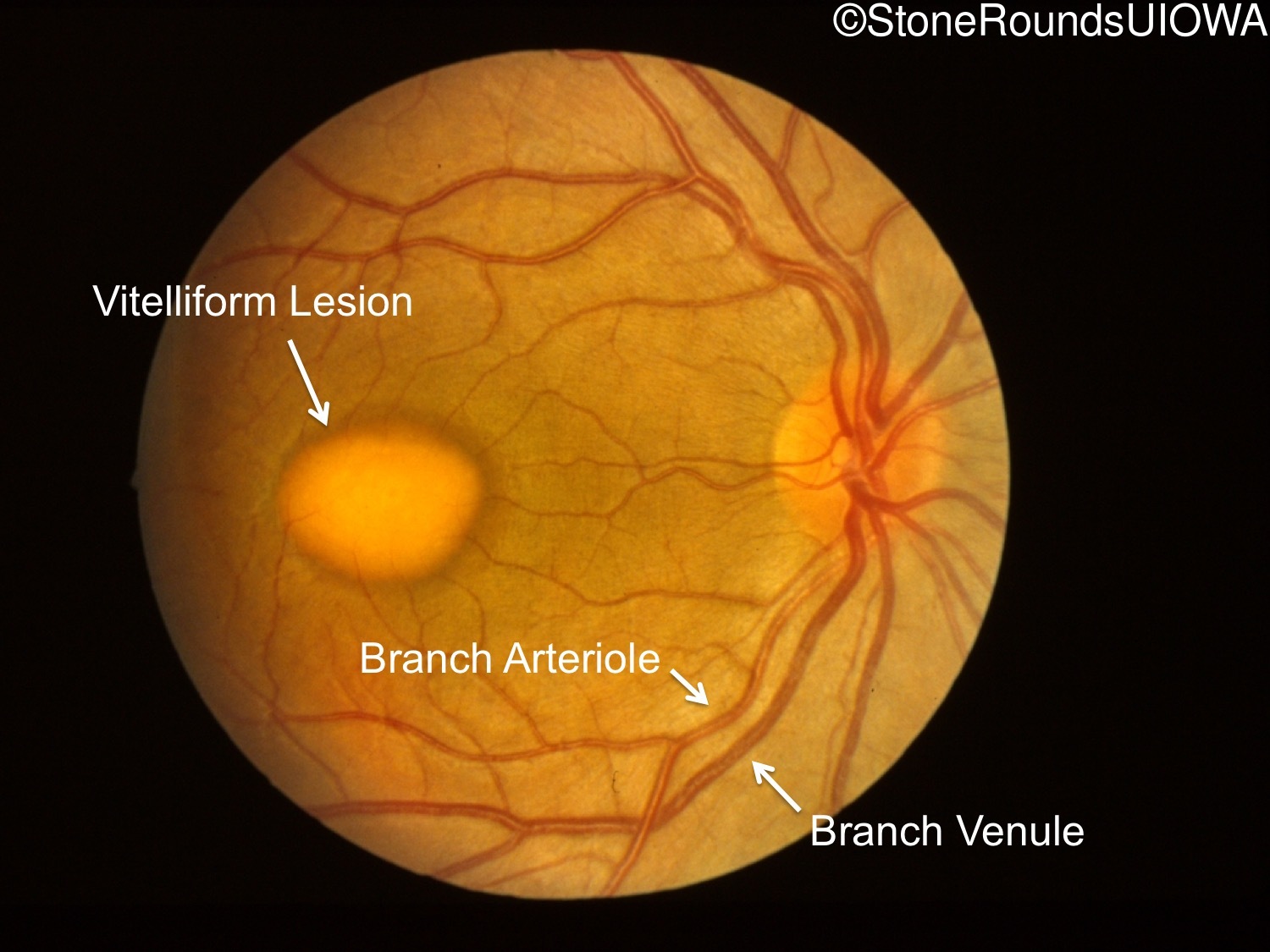
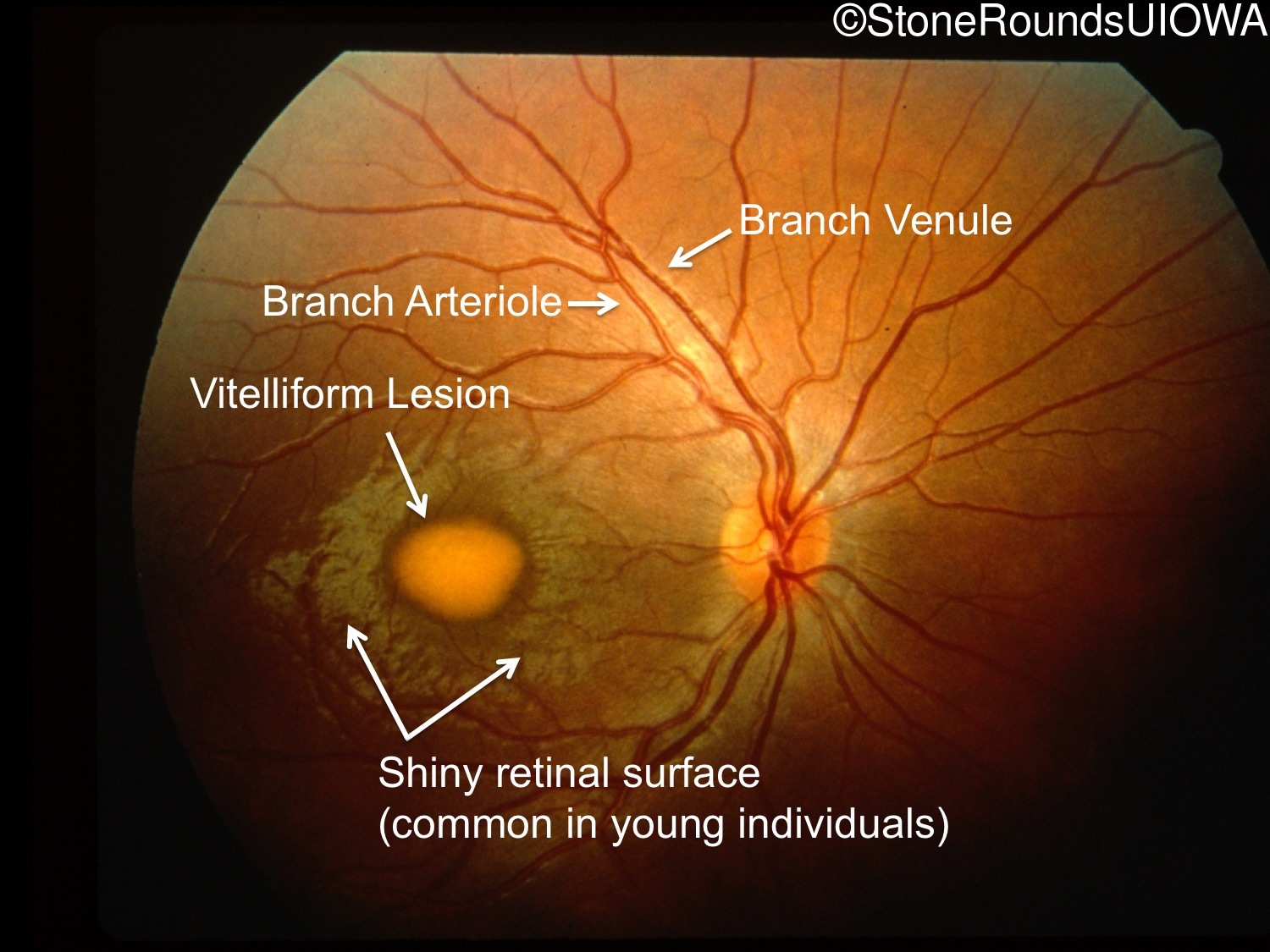
| Age at visit: 15 years |
| OD | OS | ||
|---|---|---|---|
Diagnosis & molecular findings
| Disease | Gene | Allele 1 variant(s) | Allele 2 variant(s) | Inheritance mode |
|---|---|---|---|---|
| Best Disease | BEST1 | Ala243Thr GCG>ACG | AD |
